First Church of Christ Scientist in Minneapolis
Constructed in 1897 for $13,000, the First Church of Christ Scientist in Minneapolis was designed by self-taught architect Septimus J. Bowler. Bowler mixed classic Roman and Renaissance styles throughout the rather simple exterior. The building was perfectly scaled for its lot in a residential neighborhood filled with Victorian homes. Its two columns, a deep portico, and three arched entry doors gave the building an impressive scale from the street. Numbers three and seven were significant to the early church, and the architect worked them into the design of the church as often as possible.
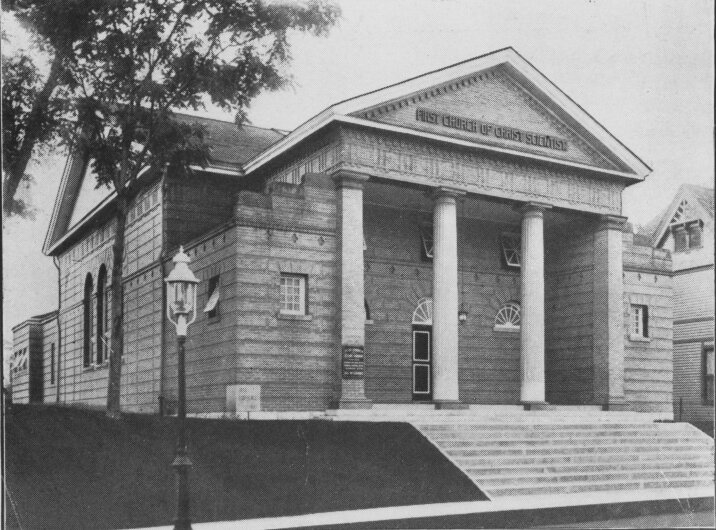
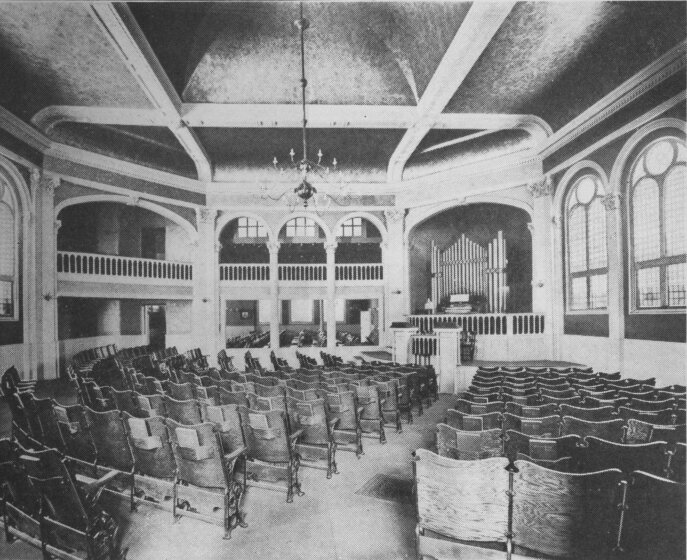
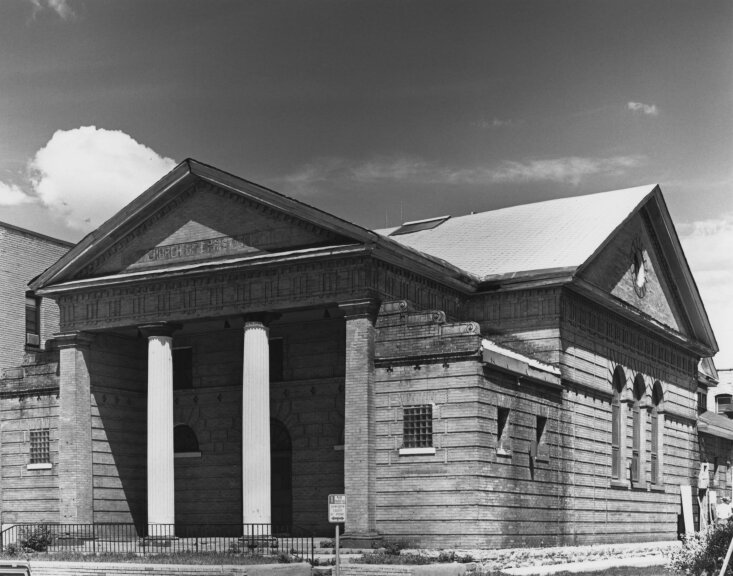
Inside, the overall design was full-on Italian Renaissance. A large entry hall–featuring a staircase often described as monumental — led to an octagonal auditorium where services were held. The octagon was lit by large stained-glass windows with a central plaster dome above. Balconies were located at the front and back of the auditorium and the remaining walls of the octagon opened on the second story into shallow seating galleries and an organ loft. Small offices at the front of the church were used for meetings and independent study rooms. An addition in 1899 extended the rear of the church to add much-needed space for Sunday School.
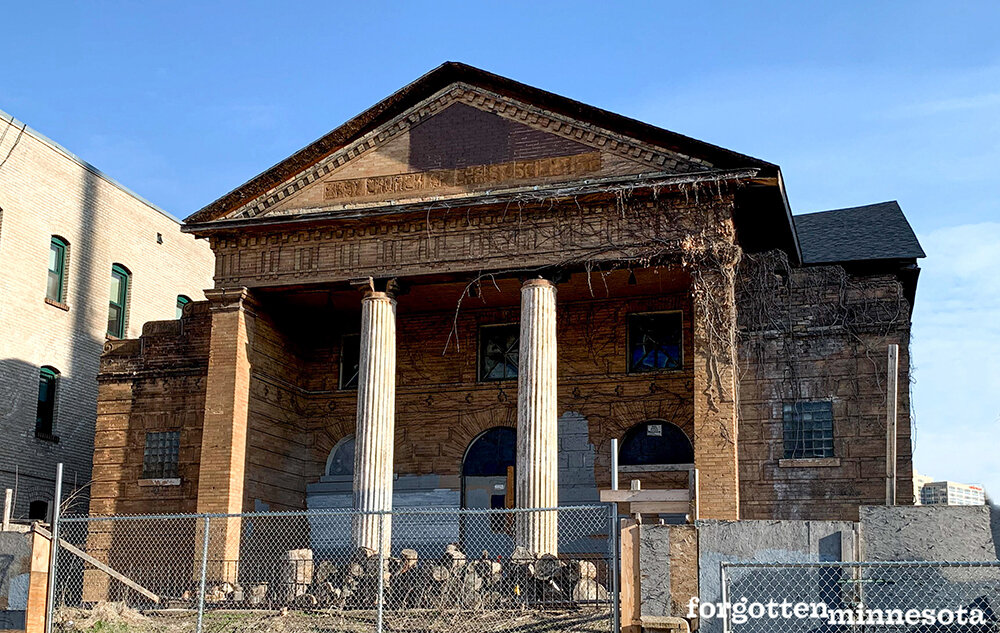
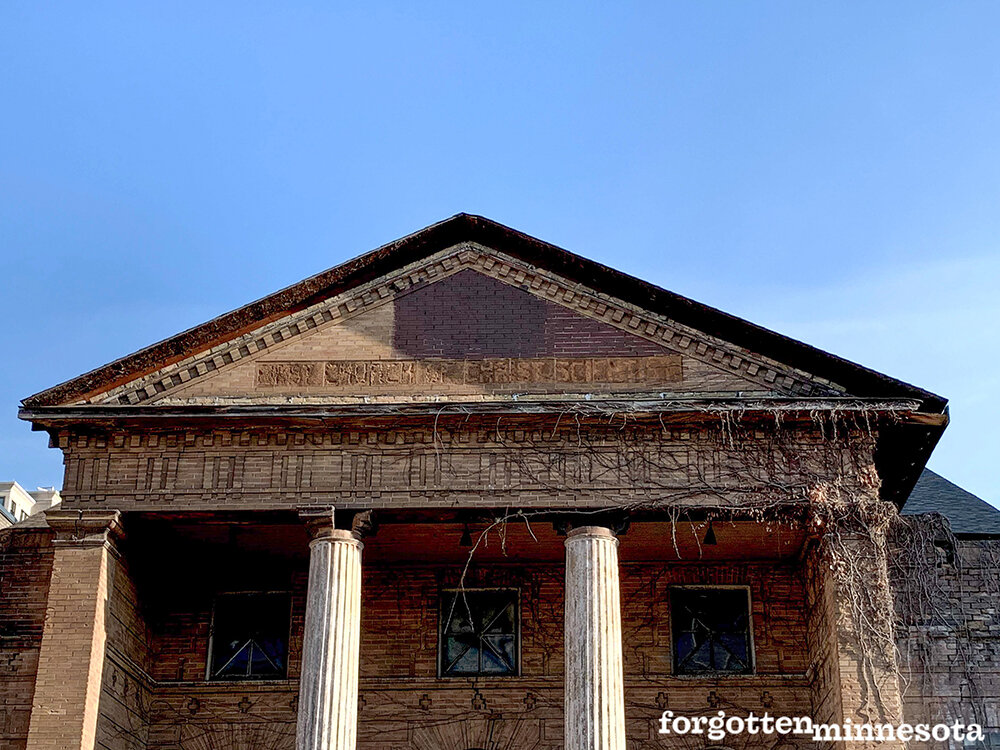
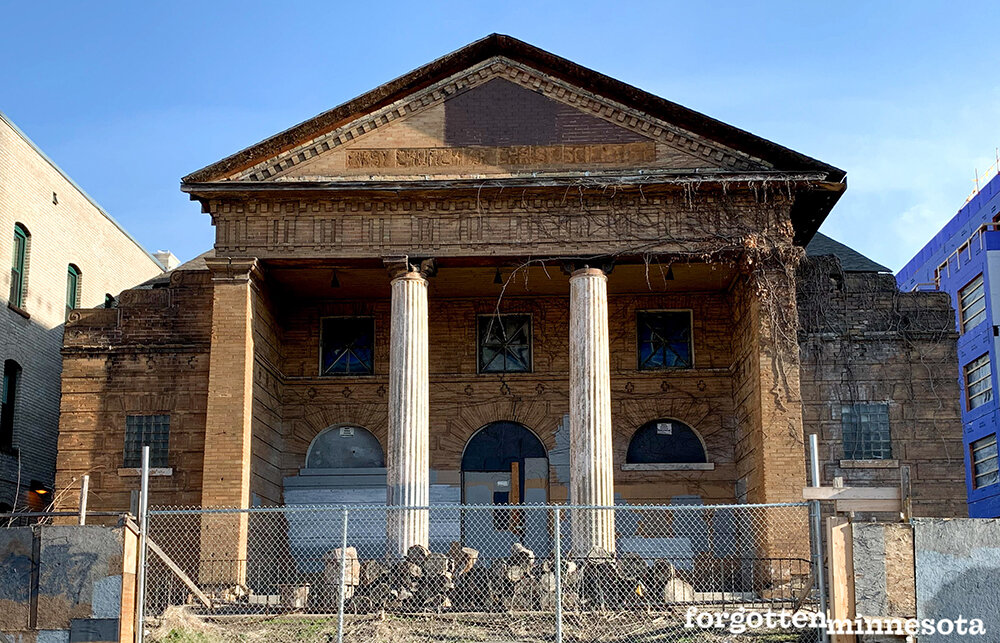
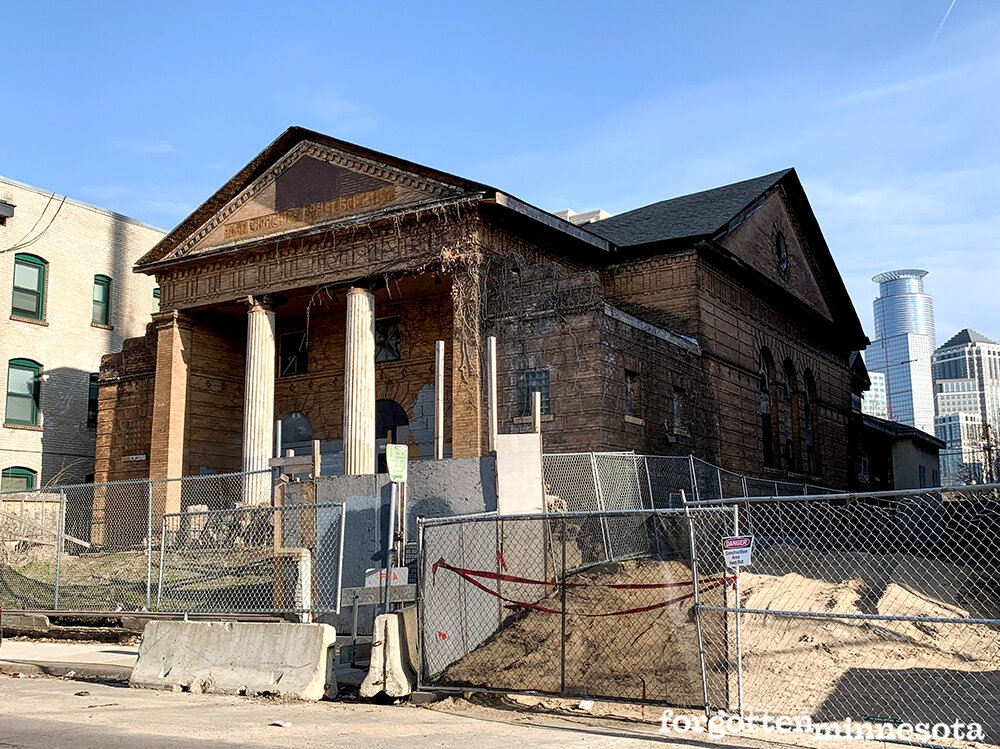
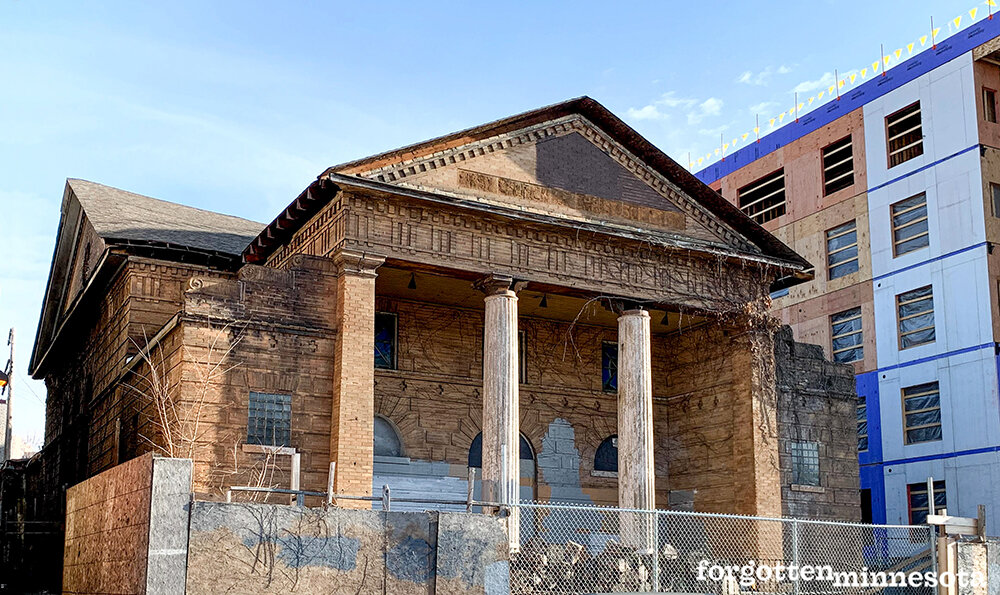
The building was the first Christian Science church in the upper midwest. The sect took hold so quickly in Minneapolis that by 1910, six separate congregations had their own church buildings. It didn’t take long for the congregation to outgrow this building, so a new, larger church was built on the corner of 24th and Nicollet in 1914. The new building hinted at the group’s past by replicating some of the same exterior elements from their first home, but on a grander scale.
After the Christian Scientists moved out, the raised inscription FIRST CHURCH OF CHRIST SCIENTIST was chiseled off of the front pediment and the front meeting room windows facing the street were filled with glass block. Other than that, the church building remained mostly intact until it was abandoned in the 1980s and fell into a state of disrepair. Today, the building is crumbling in place without any hope of revival.
UPDATE
The building was demolished in August 2022.
